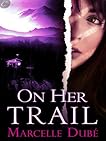My rating: 4 of 5 stars
After the awesomeness that is Crocodile on the Sandbank, the mighty opening round of the Amelia Peabody series, a reader might wonder how Elizabeth Peters could possibly have packed more awesome into these books. The answer: by the introduction of Amelia and Emerson’s son, the “catastrophically precocious” Walter Peabody Emerson, better known by his nickname of Ramses.
The opening of this book remains one of my favorite bits in the entire series. It’s four years after the events of Book 1, and Amelia and Emerson have been staying at home in England raising their small son rather than risking him by a return to Egypt. In a quick little sequence of anecdotes, Amelia provides a delightful little portrait of exactly what this kid is like, from how he started to talk at a very early age to how he delighted in his father reading grisly accounts of mummies to him, and most of all in digging up bones out of the garden. He’s a bit too twee at this early age, though, as his dialogue is written out with some baby pronunication that makes him a bit hard to read. I was cheerfully willing to overlook that though for the giggle factor of young Ramses interrupting a tea party his mother is having–by bringing Amelia a particularly filthy femur, and horrifying all the other women present. Muaha.
Sadly, Ramses is not actually much in this book. The main gist of the plot involves one Lady Baskerville coming to beg Emerson for assistance, for her husband, himself a well-known excavator, has died in the middle of digging into a new tomb. Lady Baskerville wants Emerson to continue the job–and if at all possible, to investigate the mystery of her husband’s death and other strange circumstances that have surrounded their entire dig. And it’s certainly an entertaining mystery, notable for setting up a lot of the standard elements of an Amelia Peabody book: murder, a budding young romance, and someone (or multiple someones) being attracted passionately to Emerson! One other plot element is introduced here as well that will resonate through several of the following novels: the Emersons’ acqusition of the cat Bastet.
So even though the main plot doesn’t stand out for me as much as with the rest of the series, there are still a whole bunch of important things introduced here that set up books to come. For this one, four stars.









